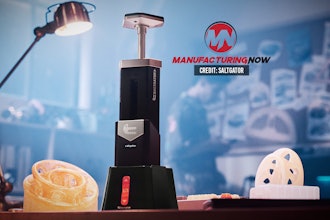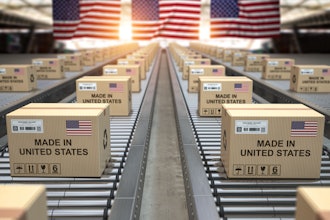1) Why do manufacturers need X-ray inspection systems?
Quite simply, manufacturers need X-ray inspection systems in order to protect their brands as a poor quality product will damage their reputation with consumers and their future business. The quality of products needs to be controlled and verified on the production line and incorporating X-ray inspection into a business, whether in the food, beverage or pharmaceutical industry, is one of the most effective ways to safeguard against potential issues.
Reducing the risk of poor quality products will also help manufacturers to increase their profitability as they avoid unnecessary and costly product recalls. Manufacturers are aware that they need to remain successful in a highly competitive and increasingly global marketplace and to achieve this they must ensure that their products meet the quality standards that their customers demand.
With an X-ray inspection system, manufacturers can identify contaminants such as metal, stone, glass, dense plastics and calcified bone. They can also reduce overall maintenance and ownership costs as many systems now combine the jobs that would normally need more than one machine. For example, in addition to contaminant identification, current X-ray systems can carry out recipe management. X-ray inspection systems can also simultaneously perform in-line quality checks such as measuring mass, counting components, identifying missing or broken products, monitoring fill levels, inspecting seal integrity, and checking for damaged products and packaging. With one machine carrying out several tasks, line maintenance and operations costs can be reduced.
2) What are the main concerns of manufacturers when selecting an X-ray inspection system?
A key factor for consideration is speed. Manufacturers simply cannot afford to have their lines slowed down by their quality control technologies. Advanced X-ray systems are designed to meet today’s manufacturers’ high throughput targets.
Manufacturers sometimes also express concern that the quality of their end products may be affected by radiation from X-ray inspection systems. However, scientific evidence from the World Health Organisation (WHO) confirms that food radiation levels up to 10,000 Sievert (which is the standard unit for the amount of absorbed radiation dose) do not affect food’s safety or nutritional value. In fact, the dose levels used in X-ray inspection are less than one-ten-millionth of those used in the WHO study. Food that passes through an X-ray inspection system spends about 250 milliseconds in the X-ray beam. During that short time it receives a radiation dose of around 0.2 Millisievert (which is 0.002 Sievert). The radiation levels are so low that organic food can be subjected to X-ray inspection with no diminution of its organic status. The food remains safe to eat and loses none of its nutritional value.
Additionally, some manufacturers express concern that their operators may be exposed to harmful radiation from X-ray inspection systems. The average human is exposed to about 2.4 Millisievert in a year from natural background radiation. This far exceeds the radiation exposure received from an X-ray inspection system in the food industry. The typical maximum dose rate immediately adjacent to an operational X-ray inspection system is 0.001 Millisievert per hour, which means an operator in direct contact with an X-ray system for 40 hours a week would receive 2 Millisievert per year.
3) What are the latest, most advanced features of X-ray inspection systems?
The latest X-ray inspection systems provide enhanced graphical interfaces for ease-of-use and, combined with the versatility of new software solutions, also provide on-screen self diagnostics, full multi-lane and multi-view capability, enabling operators to monitor the systems on one screen. Combining the information saves valuable time for the operator as it allows more products to be inspected more quickly.
New systems also come equipped with Material Discrimination X-ray (MDX) dual energy algorithms that increase contaminant detection of foreign bodies previously unseen by X-ray or any other conventional means in difficult product applications. Originally pioneered for use in the security sector, the MDX technology is able to discriminate materials by their chemical composition and allows the detection and rejection of historically undetectable inorganic contaminants such as glass shards, rocks, rubber and plastic.
X-ray inspection systems can also verify fill level, measure headspace and verify component presence and absence to alert manufacturers to check if food containers have been overfilled in order to avoid waste. For example, Eagle’s system, Quadview, provides four-view detection coverage and full inspection of high-speed jar, bottle and composite lines as well as other upright container formats, eliminating blind spots that commonly occur at the bottom of such containers during inspection. This system is also network compatible, allowing remote access by technicians to quickly diagnose and correct issues.
Some advanced systems can also be set up for remote server access and integrated with networking programmes to allow around-the-clock monitoring of statistics, images and reports generated from the individual X-ray system, from any computer with network access. This helps manufacturers adhere to retailers’ codes of conduct and help prepare for safety audits.
4) What is fat analysis and what is the most effective method?
Fat analysis is the process of determining the fat content in a given product, which is crucial for food manufacturers to meet the requirements of increasingly health conscious consumers. Dual Energy X-ray Absorptiometry (DEXA) technology is the most accurate and repeatable method of fat analysis to date. This technology measures the amount of X-rays that are absorbed by the fat content and lean meat through the use of two specific X-ray energies. By evaluating the ratio of energy absorbed at a high energy to the level of energy absorbed at a lower energy, the technology infers the average atomic numbers of the product scanned to provide the chemical lean value. This determines how healthy and lean the food product is for consumers who want to reduce their risk of certain health conditions such as heart disease. In addition to analysing the chemical lean value, these systems also verify weight and inspect for contaminants at speeds of up to 145 tonnes of bulk or carton meat per hour.
5) What does the future look like for X-ray inspection systems in the food industry?
We believe the food industry will continue to invest in food X-ray inspection systems that incorporate dual energy and fat analysis as they will provide manufacturers a strong return on investment (ROI) very quickly. This is due to the overall low cost of ownership, from a simple low-cost maintenance and replacement structure.
Also, with ever-changing trends in the food industry, producers of X-ray inspection equipment need to consider new food demands and more innovative packaging designs. For example, multi-textured foods have many density levels within the pack which result in a crowded X-ray image.. To manage the increased desire for these types of products, extra demands are being made on image analysis software to find contaminants. MDX technology, which is especially useful with crammed images, is a good solution to this potential problem. Innovative packaging designs also lead to their own challenges as machines previously calibrated to scan standard types of packaging will have to adapt to be able to accurately analyse new shapes, sizes and materials such as flexible packaging and pouches.
As food and drug safety regulations intensify, compliance and traceability through every stage of a product’s life cycle will grow in importance. For full compliance, it is essential that food manufacturers are able to access product tracking information simply and quickly. In the future all product inspection equipment will need to dually function as management tools as well as process control tools to give company leadership the information they need to make informed decisions and guarantee compliance.
6) What does the future hold for Eagle following its acquisition by Mettler-Toledo?
With a focus on innovation, value and quality, Eagle is extraordinarily well positioned to help food, consumer goods, and meat and poultry businesses protect their brands. This acquisition is a positive step forward for our global customers and our experienced team as we can bolster customer service while expanding our field support, application capability and market coverage. Our aim is to continue to help manufacturers enhance quality, safety and productivity on their lines and provide an even wider range of high-performance product inspection solutions, such as fat analysis tools, for a variety of applications.


















